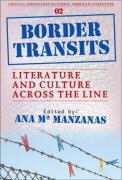Read more
What constitutes a border situation? How translatable and "portable" is the border? What are the borders of words surrounding the border? In its five sections, IBorder Transits: Literature and Culture across the Line/I intends to address these issues as it brings together visions of border dynamics from both sides of the Atlantic Ocean. The volume opens with "Part I: (B)orders and lines: A Theoretical Intervention," which explores the circle and the cross as spatial configurations of two contradictory urges, to separate and divide on the one hand, and to welcome and allow passage on the other. "Part II: Visions of the Mexican-US Border" zooms in onto the Mexican-United States border as it delves into the border transits between the two neighboring countries. But what happens when we situate the border on the cultural terrain? How well does the border travel? "Part III: Cultural Intersections" expands the border encounter as it deals with the different ways in which texts are encoded, registered, appropriated, mimicked and transformed in other cultural texts. "Part IV: Trans-Nations," addresses instances of trans-American relations stemming from experiences of up-rooting and intercultural contacts in the context of mass-migration and migratory flows. Finally, "Part V: Trans-Lations," deals with the ways in which the cultural borderlands suffuse other discourses and cultural practices.The volume is of interest for scholars and researchers in the field of Border studies, Chicano studies, "Ethnic Studies," as well as American Literature and Culture
List of contents
Contents:AcknowledgmentsIntroductionAna M MANZANAS: Border Dynamics: From Terminus to TerminatorPart I: (B)orders and Lines: A Theoretical InterventionAna M MANZANAS: Circles and Crosses: Reconsidering Lines of DemarcationPart II: Visions of the U.S.-Mexican BorderJose Pablo VILLALOBOS: Up against the Border: A Literary ResponseEdgar COTA-TORRES: Dispelling the Border Myth: Zonkey Writers and the Black LegendJavier DURAN: Border Voices: Life Writings and Self-Representation of the U.S.-Mexico FronteraSantiago VAQUERA: Postcards from the Border: In Tijuana, Revolucion is an AvenuePart III: Cultural IntersectionsIsabel SOTO: "To Hear Another Language": Lifting the Veil between Langston Hughes and Federico Garcia LorcaIsabel DURAN: The Brown/Mestiza Metaphor, or the Impertinence against BordersBegona SIMAL: "A Wall of Barbed Lies": Absent Borders in Maria Cristina Mena's Short FictionPart IV: Trans-NationsMaria Antonia OLIVER-ROTGER: Ethnographies of Transnational Migration in Ruben Martinez's Crossing Over (2001)Manuel MARTIN-RODRIGUEZ: Mapping the Trans/Hispanic Atlantic: Nuyol, Miami, Tenerife, TangierPart V: Trans-LationsAfrica VIDAL: Resisting through Hyphenation: The Ethics of Translating (Im)pure TextsAngel MATEOS-APARICIO: Trespassers of Body Boundaries: The Cyborg and the Construction of a Postgendered Posthuman IdentityBibliographyContributorsIndex

